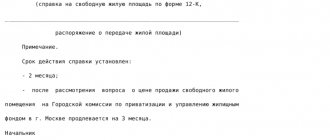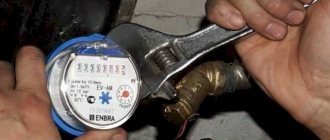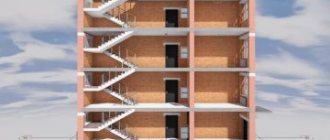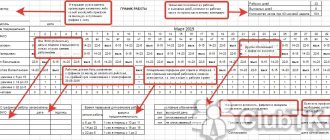Temperature standards
Of course, a lot depends on the preferences of the residents - some like it colder and are content with a low temperature of 18° C, others prefer cozy warmth and 24-25° C instead of thick sweaters and socks. But you need to know what temperature should be in our apartment according to legislation , since not only the health and well-being of the family, but also the budget depends on this.
The standard temperature in the apartment is contained in GOST R 51617-2000. Housing and communal services. General technical conditions". Here are the values needed to calculate the maximum power of heating devices. Staircases in residential buildings should have a temperature of 14-20 ° C. This is a space that residents use for a short time, no more than an hour, and are dressed in outerwear.
In inter-apartment corridors, as well as in lobbies, the temperature is 16-22 ° C. In hallways, living rooms and kitchens with gas or electric stoves, the temperature is 18-25 ° C. These rooms are intended for permanent residence (that is, more than 4 hours). The highest temperature is 24° C – valid for calculations in the bathroom. The norm is also regulated by Sanitary Rules and SanPiN.
Medical standards for temperature conditions in residential premises
A little about what the optimal temperature should be in a house according to medical recommendations. The norm in residential premises is 22° C. This temperature provides high thermal comfort with an air humidity of 30%. If the room temperature is higher, it can cause irritation of the respiratory tract, mucus, and increased susceptibility to bacteria and viruses in the nose and throat. The only exception is the bathroom, where water vapor rises and even higher temperatures do not pose a health risk.
When the child is at home, the temperature in the apartment should be raised by at least 1 degree, and in the bathroom or other room where he bathes, up to 28 degrees. In adult bedrooms, the temperature can be slightly cooler than in the living room - around 20° C. This indicator guarantees deeper sleep and, therefore, better rest.
Normal temperature in the apartment
| Type of premises | t air, C | Resulting t, C | Humidity, % | Air movement, m/s |
| Autumn-winter period | ||||
| Living room | 18-24 | 17-23 | 60 | 0,2 |
| The same parameters in regions with the coldest five-day period (-31 0 C and below) | 20-24 | 19-23 | 60 | 0,2 |
| Kitchen | 18-26 | 17-25 | n/n* | 0,2 |
| Bathroom | 18-26 | 17-25 | n/n | 0,2 |
| Bathroom, combined toilet | 18-26 | 17-26 | n/n | 0,2 |
| Area | 16-22 | 15-21 | 60 | 0,2 |
| Flight of stairs, lobby | 14-20 | 13-19 | n/n | 0,2 |
| Storerooms, mezzanines | 12-22 | 11-21 | n/n | n/n |
Evaluating the information obtained from the table, we can draw the following conclusion.
In an ordinary city apartment, in ordinary rooms, the minimum temperature threshold in winter is set at 18 0 C. Corner rooms should be heated somewhat better. The temperature in them should not fall below 20 degrees Celsius. For the bathroom the highest parameter is +25 0 C.
To create such a temperature regime in an apartment, heating standards in a city apartment require the temperature of centralized heating batteries to be at least 35 0 C and no more than 95 0 C. Ideally, the batteries in an apartment should have a temperature in the range of 50-70 0 C .
Important!
At night, minor temperature fluctuations are allowed due to a sharp drop in ambient air temperature.
SanPiN establishes a time frame during which an apartment may not be heated in winter - no more than 24 hours a month, while a one-time absence of heat in the radiators should not exceed 16 hours in a row.
The official opinion of experts regarding temperature standards for housing facilities that exist today can be seen by watching the proposed video.
The standards that we considered are the starting point for residents of apartment buildings. Based on them, the optimal heating option for the apartment is developed and the normal operation of residential buildings and premises is maintained. If any of the specified parameters does not correspond to the standard, you can safely contact the management company, the organization that supplies heat resources, the housing office or the housing inspectorate.
The degree of air heating in residential premises is set at the state level. But often responsible persons or organizations violate the norms, which leads to a deterioration in living conditions. The argument is the unsatisfactory condition of utilities or extreme weather conditions.
In this case, you need to know what temperature should be in your apartment in winter according to all standards. Deviation from current documentation standards is a violation.
Heat rate control
In order to maintain the above recommendations and to minimize heating costs, it is necessary to properly control heat standards, taking care of the thermal insulation of the house. Window and door frames need to be sealed. In the room, do not cover radiators, do not paint them with a thick layer of paint, and do not hang thick window curtains over them (heaters are usually installed under windows). Place furniture and equipment at a minimum distance of 1 meter from radiators.
It is recommended to regulate the temperature schedule of the heating system in individual rooms using manual or electronic thermostats. When installed even on an old heater, the electronic head can be adjusted to a temperature of up to 0.5 degrees, and program the heating output for a whole week, taking into account the time of day and the habits of local residents.
Modern thermostats will also adjust the heating output according to external conditions - warming or cooling outside, sunlight, etc. You don't need to turn off the heat completely, all you have to do is lower the temperature, for example by setting the economy mode to 15 ° C. Reducing the temperature by even 1 ° C increases heat savings by 5-7.5%.
Factors affecting temperature
The temperature readings in the apartment are influenced by many factors, primarily external. They fluctuate due to the following conditions:
- heating off;
- climatic features of the place;
- change of seasons;
- individual characteristics of individual apartments.
The heating temperature schedule also depends on the place where the property owners live. For example, in a northern latitude it will be different from a southern climate. The influence of factors such as atmospheric pressure and outdoor air humidity also affect the normal value of the heating system in any month.
When the seasons change, the microclimate in living rooms also varies. For example, in the winter months the temperature will be lower, and in the hot season it will be higher. When in the spring they stop supplying heat to the radiators, following the shutdown schedule, the temperature in the apartment also drops. For mid-latitudes, the optimal value in winter is about 22 degrees, and in summer – 25 degrees. Although at first glance the difference of three degrees is insignificant, it affects the well-being of everyone living in an apartment building or private building.
Regulating the indoor climate
When heating outages occur, the temperature in the apartment must be controlled for the comfort of all citizens living in it. There are people who feel comfortable and well during the hot months; they do not require the installation of climate control equipment. Also, some people constantly ventilate their rooms during the winter cold. But all the requirements of the average person are reflected by the current standards for any heat supply company that has a central shutdown schedule for heating appliances. After all, hypothermia, like overheating, has a negative effect on human health.
Among other things, norms also depend on gender. Women require higher temperatures than men. You need to be extremely careful about the temperature conditions in the apartment where children live. They cannot yet regulate their temperature, so they are susceptible to overheating and freezing faster than adults. As a result, the thermal norm for them should be stable and be about 22 degrees.
In accordance with current sanitary standards, central temperature control systems must maintain values of no less than and no more than 22 degrees, and all deviations from this value have a bad effect on well-being.
To maintain normal temperature, certain conditions must be observed. Previously, the temperature was regulated using radiators, and in order to warm the room more, they used additional heat sources - various electric heaters, convectors, etc. To cool the room, they opened transoms and windows, thus solving the problem.
Today, scientific progress has made it possible to choose any climate control equipment that will provide comfortable conditions in apartments. For example, modern air conditioners not only cool air flows coming from the street, but are also equipped with a heating function. They also have dehumidification functions when the room is too humid, and purify the air from harmful compounds.
Current sanitary standards do not set the temperature of radiators. It is only important that the temperature in the home corresponds to certain indicators, which is influenced by differences in climatic conditions of the corresponding region. Indicators in the winter months should not be lower than 20 degrees. If this value is less, then the services of the heat supply organization are of poor quality.
In this case, property owners need:
- seek to eliminate poor performance in the provision of public services;
- demand from the manager] to recalculate payments [/anchor] when the heating is turned off unscheduled;
- carefully seal all cracks in windows and doors;
- buy additional equipment for heating the room;
- install autonomous heating appliances.
How to increase or decrease the temperature
According to GOST, the minimum indicator in an apartment should correspond to 15 degrees. With such a value, although life is quite difficult and uncomfortable, management companies believe that all standards are met. Because of this, the population independently regulates the temperature regime, and when cold weather sets in or mass heating outages occur, double-glazed windows are installed or the windows are sealed. At worst, they turn on electric heaters or convectors.
What to do when the constant temperature in the home reaches 28 degrees, which happens when the batteries are too hot. The highest value in the standard is 24 degrees, to which an error of 4 degrees is added. When thermostats are installed on the radiator, there are no questions, you just need to adjust it to the required number.
When there are no such devices on the battery, it is not very convenient to constantly open the windows due to drafts in the room. If there is a small child in the apartment, then such actions are not a way out of the situation; this is completely contraindicated for older people. To correct the situation you can:
- turn on the tap in front of the radiator;
- install an air recuperator.
When you close the ball valve in front of the battery, you will reduce the amount of hot water supplied. The recuperator will allow air flows to circulate correctly, and the air flow will enter the home already warmed up.
Optimal temperature during the heating season
It is clear from the above that the comfortable value in the apartment is set by SNIP at 20-22 degrees. Possible indicators are defined within the range of 18-26 degrees, in accordance with the purpose of the housing. Kitchens, living rooms and bathrooms have different standards. The errors correspond to 3 degrees of decrease and 4 degrees of increase in indicators. Unfortunately, according to current legislation, when it is 15 degrees above zero in an apartment, claims cannot be made against management companies. Also at a temperature of 30 degrees, when in winter the batteries heat up to their maximum. Here, as they say, if you want to live, know how to move around and contact the relevant authorities.
Air temperature standards for the heating season in an apartment 2021
The main legislative act regulating temperature standards in premises is GOST 30494-2011. “Residential and public buildings. Indoor microclimate parameters" .
They stipulate the optimal and permissible temperature standards used for apartment buildings and various premises:
- kindergartens;
- administrative buildings.
It follows from the document that the standard temperature in the apartment should be from +18°C to +24°C .
| Period of the year | The name of a room | Air temperature, °C | |
| optimal | acceptable | ||
| Winter | Living room | 20-22 | 18-24 (20-24) |
| At the temperature of the coldest five-day period: -31 °C and below | 21-23 | 20-24 (22-24) | |
| Kitchen | 19-21 | 18-26 | |
| Toilet | 19-21 | 18-26 | |
| Bathroom, combined toilet | 24-26 | 18-26 | |
| Facilities for recreation and study sessions | 20-22 | 18-24 | |
| Inter-apartment corridor | 18-20 | 16-22 | |
| Lobby, staircase | 16-18 | 14-20 | |
| Storerooms | 16-18 | 12-22 | |
| Summer | Living room | 22-25 | 20-28 |
In brackets is the indoor temperature for nursing homes and families with disabled people.
Responsibility of utilities for violations of standards
According to the law, tenants and homeowners have the right to apply for recalculation to management companies, which are obliged to reduce heating payments by 0.15 percent for each hour of violation of standards. If you do the math, for 28 days of improper provision of the service, the payment is reduced by up to 90 percent. Naturally, utility services themselves will not perform such a recalculation, so you will have to turn to the courts.
There are many cases where residents of apartment buildings have sued utility companies for money for services that were not fully provided or of poor quality. For example, three years ago, a Perm resident managed to recover 136 thousand rubles from the management company for violating their obligations to provide heat to the apartment. Therefore, you should defend your rights and contact regulatory authorities.
Temperature norms in winter in an apartment
Residential premises must be heated when the average outdoor temperature per day is less than 8 degrees. The heating season ends at temperatures above this mark. The minimum temperatures are:
- 20 °C – rooms located in the corners of the house;
- 18 °C – living rooms;
- 18 °C – combined bathroom;
- 14 °C – pantry room;
- 16 °C – corridors between apartments;
- 25 °C – bathroom;
- 18 °C – kitchen room;
- 16 °C – lobby;
- 5 °C – elevators;
- 4 °C – attic room.
Despite the fact that the standards are determined by special documents, they may differ depending on how the apartment is located in the house. According to GOST, air temperature indicators from 24.00 to 5.00 hours can decrease by 3 degrees. Indoor temperature measurements should be carried out in a room one and a half meters from the floor, and also 1 meter from the wall that borders the street.
Indicators may exceed the established norm, but only by 4 degrees. If the temperature does not meet the standards, the payment for services is reduced by 0.15 percent for each hour. If the heating is weak, anyone can submit a request to the management company or emergency dispatch service with a request to resolve the issue. The company sends a technician or engineer to the site to measure the temperature in the room.
We advise you to read:
- ✅ Dependence of heating temperature on outside temperature
- ✅ Standard and permissible deviation of hot water temperature
- ✅ Complaint about lack of heating in the apartment: sample
- ✅ What to do if the hot water is at low temperature?
The inspection of the heating system ends with the creation of a report (in two copies). One copy remains with the owner of the apartment. If the complaint is confirmed, the utility company is obliged to correct the situation. During the period of violation of norms, payment for heat is recalculated. If you notice that the temperature in the room does not comply with the established standards, do not delay your application. Recalculation for heat will begin only from the day when the act was drawn up.
It is important to emphasize that minor interruptions in the heat supply are permitted. During a month, a break in heating is possible for a total of 24 hours. Heating supply to residential premises should not be interrupted for more than 16 hours continuously.












